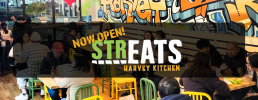Social Media Marketing Strategies for Restaurants in 2024: A Comprehensive Guide
In 2024, a strong social media presence will be essential for restaurant success. With 88% of people trusting online reviews and social recommendations, your restaurant’s social media strategy could determine whether your dining room is bustling or empty. Here’s how to master social media marketing in the upcoming year.
The Importance of Social Media for Restaurants in 2024
Social media is more than just a platform for sharing pictures; it’s a powerful tool that influences customer decisions. Statistics reveal that 72% of customers have used social media platforms like Facebook to make restaurant or retail decisions based on user-generated content. Restaurants that effectively leverage these platforms are likely to see higher engagement, better reviews, and increased foot traffic.
- Focus on Visuals
Visual content is king on social platforms, especially on Instagram and Facebook. High-quality photos of your dishes, drinks, and restaurant ambiance can significantly increase engagement. Videos are also highly effective—consider sharing cooking tutorials or behind-the-scenes clips of your kitchen in action. Reposting user-generated content, such as photos from satisfied customers, can enhance credibility and encourage more patrons to share their experiences.
- Use Hashtags and Locations
Hashtags and location tags are essential for increasing the discoverability of your content. On Instagram, use a mix of popular food-related hashtags, niche tags that match your menu, and specific location tags to target local audiences. Join in on relevant Instagram challenges or trending topics by using appropriate hashtags. On Facebook and Twitter, limit your use of hashtags to two or three relevant ones and always include your location to attract local diners.
- Run Contests and Campaigns
Engagement skyrockets when you run contests, polls, or campaigns. On Instagram, photo contests where users submit images of your food for a chance to win can generate excitement. Twitter polls are great for gathering quick feedback, while boosted Facebook posts can effectively promote special offers to local audiences. Campaigns that encourage reviews or user-generated content in exchange for discounts or promo codes can further increase engagement across all platforms.
- Promote Reviews and Simplify Bookings
Positive reviews can significantly influence potential customers. Make it a priority to collect and promote reviews across all social media platforms. Respond to each review to show your appreciation and offer perks for positive feedback. Additionally, make booking easy by including direct links, phone numbers, and booking options in your social media bios.
- Embrace Trending Features
Social media platforms are constantly evolving, introducing new features that can help you stay ahead of the competition. In 2024, short vertical videos, particularly on TikTok and Instagram Reels, will dominate. Utilize these formats to create engaging content, such as behind-the-scenes videos or live cooking demos. Other features like Snapchat Geo filters and QR snap codes can also drive engagement and direct bookings.
- Optimize Your Strategy
To maximize your social media efforts, regularly analyze which posts, hashtags, and features resonate best with your audience. Does your audience prefer Instagram Reels over static images? Are certain hashtags driving more engagement? Build on what works and tweak what doesn’t. Consistency in posting and branding across platforms is key to maintaining an effective social media presence.
Conclusion
A well-planned social media strategy is crucial for any restaurant looking to succeed in 2024. By focusing on visual content, utilizing hashtags and location tags, running engaging contests and campaigns, promoting reviews, and staying updated with trending features, your restaurant can build a loyal customer base and drive lasting success. Remember, social media is not just about posting content—it’s about building relationships with your audience and creating a community around your brand.
Streats Harvey Kitchen is Now Open in Kelowna, BC!
16 December 2024
Joey’s Fish Shack Wallaceburg: Opening Soon!
6 November 2024
Opening Soon: Streats Kelowna Kitchen
30 October 2024
New Location Opening Soon: Streats Airdrie Kitchen
30 October 2024
Restaurant Marketing Trends for 2024: Boosting Business
13 August 2024









